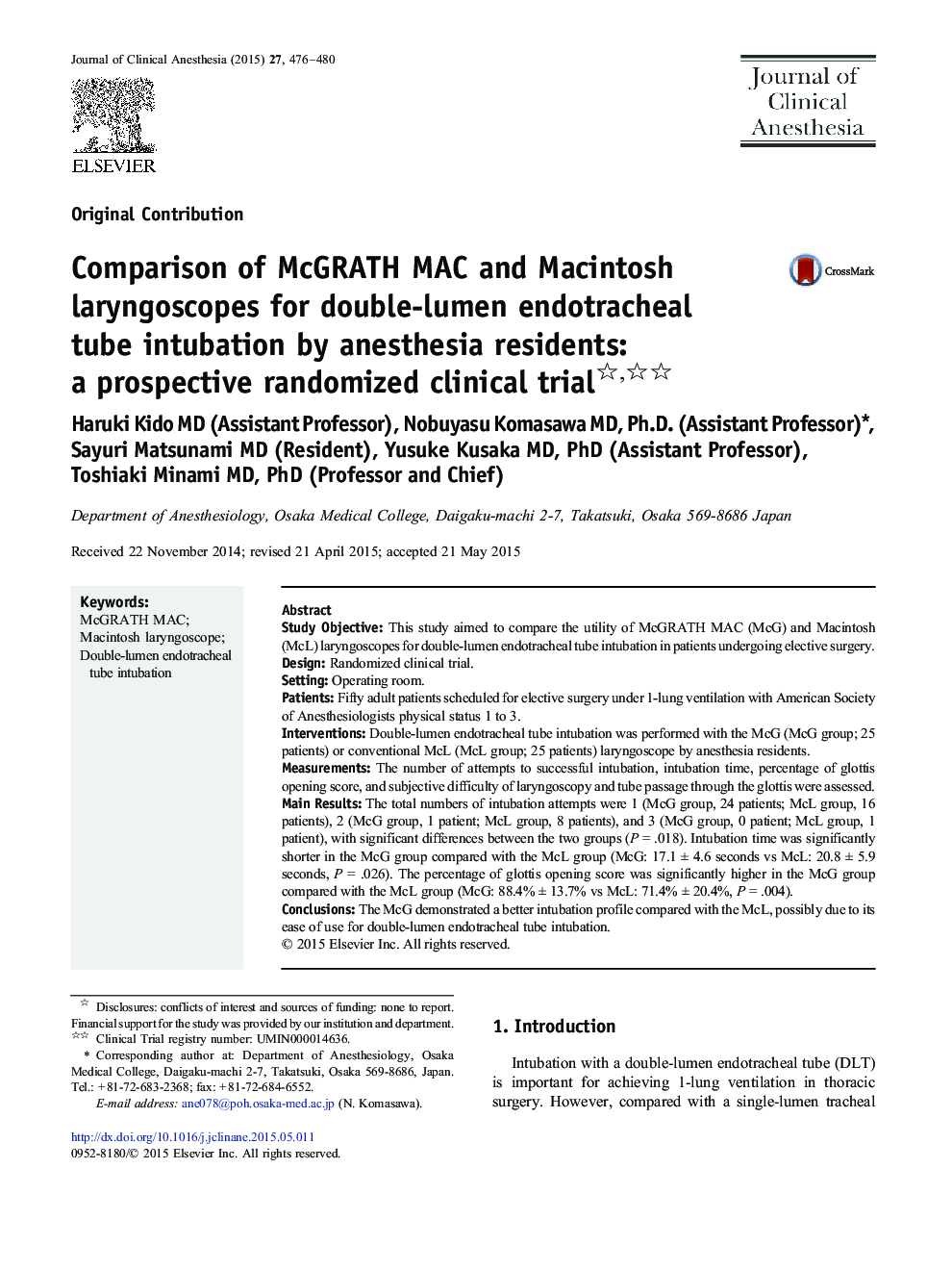| Article ID | Journal | Published Year | Pages | File Type |
|---|---|---|---|---|
| 2762223 | Journal of Clinical Anesthesia | 2015 | 5 Pages |
•The McGRATH MAC (McG) is a device that has been developed with a high-resolution video camera, providing both direct and indirect views of the glottis and reportedly useful in various airway management. However, the benefit of using McG for intubation with double-lumen endotracheal tubes remains unclear.•We investigated the hypothesis that videolaryngoscope McG is more useful than Macintosh laryngoscope (McL) for double-lumen endotracheal tube intubation performed by anesthesia residents.•The number of attempts for a successful intubation, intubation time, percentage of glottis opening score, and subjective difficulty of laryngoscopy and tube passage through the glottis were measured.•The total number of intubation attempts was significantly smaller in the McG group than in the McL group. Intubation time was significantly shorter in the McG group compared with the McL group. The percentage of glottis opening score was significantly higher in the McG group compared with the McL group. The McG demonstrated a better intubation profile compared with the McL, possibly due to its ease of use for double-lumen endotracheal tube intubation by anesthesia residents.
Study ObjectiveThis study aimed to compare the utility of McGRATH MAC (McG) and Macintosh (McL) laryngoscopes for double-lumen endotracheal tube intubation in patients undergoing elective surgery.DesignRandomized clinical trial.SettingOperating room.PatientsFifty adult patients scheduled for elective surgery under 1-lung ventilation with American Society of Anesthesiologists physical status 1 to 3.InterventionsDouble-lumen endotracheal tube intubation was performed with the McG (McG group; 25 patients) or conventional McL (McL group; 25 patients) laryngoscope by anesthesia residents.MeasurementsThe number of attempts to successful intubation, intubation time, percentage of glottis opening score, and subjective difficulty of laryngoscopy and tube passage through the glottis were assessed.Main ResultsThe total numbers of intubation attempts were 1 (McG group, 24 patients; McL group, 16 patients), 2 (McG group, 1 patient; McL group, 8 patients), and 3 (McG group, 0 patient; McL group, 1 patient), with significant differences between the two groups (P = .018). Intubation time was significantly shorter in the McG group compared with the McL group (McG: 17.1 ± 4.6 seconds vs McL: 20.8 ± 5.9 seconds, P = .026). The percentage of glottis opening score was significantly higher in the McG group compared with the McL group (McG: 88.4% ± 13.7% vs McL: 71.4% ± 20.4%, P = .004).ConclusionsThe McG demonstrated a better intubation profile compared with the McL, possibly due to its ease of use for double-lumen endotracheal tube intubation.
